Devon Trevarrow Flaherty's Blog, page 56
February 25, 2017
Best Books: Literary Fiction
So, turns out lists of literary fiction are not that easy to find, unless you are looking for results from a particular year. That, however, is a list that I am not yet making. So I did my best. (Honestly, it’s not the easy to categorize literary fiction, anyhow. I’m pretty sure some of these are in the wrong category.) I knew what I was looking for, but in the end I felt that I had overlooked most of the classics in the genre. What I’m hoping is that those titles have already seeped onto the other lists. Hoping.
Please feel free to send me some of your own suggestions.
The Handmaid’s Tale, Margaret Atwood[image error]
The Kite Runner, Khaled Housseni
The Name of the Rose, Umberto Eco
Possession, A.S. Byatt
The Unbearble Lightness of Being, Milan Kundera
Midnight’s Children, Salman Rushdie
Perfume, Patrick Suskind
The Time Traveller’s Wife, Audrey Niffenegger
A Thousand Splendid Suns, Khaled Housseni
A Prayer for Owen Meany, John Irving
The Curious Incident of the Dog in the Night-Time, Mark Haddon
Middlesex, Jeffrey Eugenides
The Color Purple, Alice Walker
The Shipping News, E. Annie Proulx
Year of Wonders, Geraldine Brooks
The Poisonwood Bible, Barbara Kingsolver[image error]
The Wind-Up Bird Chronicle, Haruki Murukami
The Book Thief, Markus Zusak
The Amazing Adventures of Kavalier and Clay, Michael Chabon
The Prince of Tides, Pat Conroy
Beloved, Tony Morrison
Life of Pi, Yann Martel
The Kitchen God’s Wife, Amy Tan
The Blind Assassin, Margaret Atwood
The World According to Garp, John Irving
Rabbit Run, John Updike
Ragtime, E.L. Doctorow
The World According to Garp, John Irving
The Executioner’s Song, Norman Mailer
A Confederacy of Dunces, John Kennedy Toole
Lullaby, Chuck Palahniuk
The Color Purple, Alice Walker[image error]
Ironweed, William Kennedy
White Noise, Don DeLillo
Blood Meridian, Cormac McCarthy
World’s End, T.C. Boyle
Beloved, Toni Morrison
The Broom of the System, David Foster Wallace
In the Lake of the Foods, Tim O’Brien
Cold Mountain, Charles Frazier
American Pastoral, Philip Roth
The Corrections, Jonathan Franzen
Empire Falls, Richard Russo
Everything is Illuminated, Jonathan Safran Foer
What is the What, Dave Eggers
Against the Day, Thomas Pynchon
Atonement, Ian McEwan
A Thousand Acres, Jane Smiley
Memoirs of a Geisha, Arthur Golden
Never Let Me Go, Kazuo Ishiguro
High Fidelity, Nick Hornby[image error]
Cloud Atlas, David Mitchell
Water for Elephants, Sara Gruen
The Hours, Michael Cunningham
White Teeth, Zadie Smith
Half of a Yellow Sun, Chimamamnda Ngozi Adichi
Atonement, Ian McEwan
Billy Lynn’s Long Halftime Walk, Ben Fountain
A Visit from the Good Squad, Jennifer Egan
The Amazing Adventures of Cavalier and Clay, Michael Chabon
The Corrections, Jonathan Franzen
Gilead, Marilynne Robinson
Wolf Hall, Hilary Mantel
The Known World, Edward P. Jones
The Brief Wondrous Life of Oscar Wao, Junot Diaz
Americanah, Chimamanda Ngozi Adichie
Austerlitz, W.G. Sebald[image error]
My Brilliant Friend, Elena Ferrante
The Line of Beauty, Alan Hollinghurst
The Road, Cormac McCarthy
NW, Zadie Smith
2666, Roberto Bolaño
The Great Fire, Shirley Hazzard
Lincoln in the Bardo, George Saunders
Infinite Jest, David Foster Wallace
Dead Souls, Nikolai Gogol
Watership Down, Richard Adams[image error]
Dandelion Wine, Ray Bradbury
I Served the King of England, Bohumil Hrabal
The Wind-Up Bird Chronicle, Haruki Murakami
On Beauty, Zadie Smith
The Master and Margarita, Mikhail Bulgakov


Book Review: The Little Prince
[image error]
When I saw the charming movie preview for the newest The Little Prince adaptation, I knew it was time to add it to the summer reading list. I like to read a book, timing it with an exciting movie release. Plus, I had been meaning to read The Little Prince for years and years. It’s a classic, and besides, my college best friend’s cooler-than-cool older sister called it her favorite book. I figured it would rise up there with Over the Rhine.
There was no need to rush into it. Among a rash of great summer reading, this was perhaps the biggest disappointment (though the movie was not. See the review below.)
The Little Prince (Le Petit Prince in its native French) was published in 1943. The creation of a French aristocrat, writer, poet, and aviator Antoine de Saint-Exupery, it would become his most famous work in any field as the fourth most-translated book in the world and one of the world’s best-selling books of all time, seemingly always making an appearance on the Best Books lists. He did not live long enough to see any of that though, as he died within the year, at age 44.
True, the French tend to have different tastes from us Americans, but I like Amelie as much as the next Gen-X-er. This book… well… it just was not my taste.
Perhaps I had waited too long, had too much expectation. And with the cute illustrations I had seen emblazoned on tee-shirts my whole life, well. But the brief book (aka. novella), if it can be called anything, is preachy, and maybe too simple. I also had this feeling while reading it that there was a level I was not aware of, like a political one (or maybe just a second-level story. I kept thinking maybe the author was the man who crashed into a desert, but of depression, and met a “boy” who it turns out has a terminal illness, so symbolizes his own mortality? But when I looked up some analyses of it, it all seemed more straightforward than that.)
It had great quotes, and great moments, and the writing was really nice. BUT the overall plot got to me, and I don’t mean that in a good way. There was a plot, a story, although not told in the conventional way. The story made it both interesting and distractedly short and over-simplified. BUT it was also just really odd. Full of odd pairs and glaringly allegorical characters, I just could never stop snickering. The illustrations were endearing. BUT somehow I still wanted to re-draw every one of them.
In the end, and in complete opposition to the majority of the literary world, this book had too many “buts” for me to say that I enjoyed it or would ever read it again.
Oh, also, not for kids. It’s just not meant for them, despite the age of the main character or the age-appropriateness of the new movie.
__________
I read The Little Prince, by Mariner Books and published in 2000. The original manuscript, in French, was published in 1943.
__________
[image error]MOVIE
The Little Prince (2016) was a pretty great movie. Better than the cover seemed like it would be. I still found the Little Prince parts of the story to be sorta weird, but the addition of the more modern, Hollywood-style plot and characters did make the whole thing more palatable to people who don’t love The Little Prince. It makes me wonder what people who are fans of The Little Prince (and there are many and avid) think about it.
Charming. Interesting. Family-friendly. Worth seeing, if only once.


February 24, 2017
Author Review: Bert Greene
[image error]You are about to be introduced to my favorite cookbook author. It is not Bobby Flay. It is not Nigella Lawson, or Julia Childs, or Deborah Madison, though I love them all. It is none other than the lately underappreciated Bert Greene. He, my friend, was a real cookbook author.
He was born into creativity and an artistic flourish, and although the thrust of that was to be exhibited in the kitchen, he found an outlet for even more of it through cookbook writing, restaurant ownership, TV appearances, and radio and newspaper syndication. He reminds me a bit of Lynne Rosetta Kasper (of “Splendid Table” fame), including the nostalgic, calm, and decadent air, not to mention a pure love for food which is enhanced by their love of (and talent with) words.
Bert Greene’s cookbooks are not just recipes. Every chapter and every recipe includes an introduction which is part anecdote, part history, and part entertainment. And his use of language is nearly flawless. It can be beautiful, but it mostly just stays out of the way as you are whisked off to Depression-era New York, or a mid-century restaurant on the salty East Coast, or an interview with an eccentric centenarian. I feel completely at home in Bert Greene’s Kitchen, no matter what form (at which stage of life) that is taking.
But of course, one should also judge a cookbook by its recipes. Still, Greene’s remain my favorite books. We seem to have a lot of culinary loves in common, which is most evidenced in his choice of ingredients for the subjects of Kitchen Bouquets. Cinnamon? Lemon? Whiskey? Yes, please. And even after he lures me in to making just about every recipe in his cookbooks, I then love the results. Sometime a bit rich and complicated, there are some recipes that I come back to again and again and again (like his Baked Beans, Corn Salad, and Minted Peas). I am currently cooking all dinners from my newest acquisition, Kitchen Bouquets, and just re-warmed the Yucatan Chicken Mole and Baconed Beans and Rice for lunch. Yum!
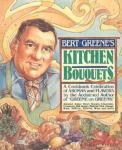
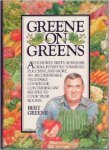
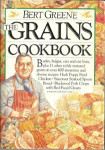
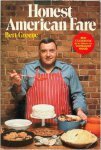
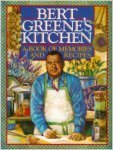
As a rule, his recipes turn out as you expect, which is what you want from a recipe, although he is more detailed than I would like. And man does he love bacon and cream! (Who doesn’t?) Don’t go looking for a coffee table book with these, however. This was before the era of photo-riffic recipe books (which, incidentally, are not a favorite of mine.) It just leaves more room for actual recipes.
Tonight it’s Pork Meatloaf. Tomorrow it’s Potato Ham Soup and Warm Spinach Salad. And for a lifetime, I’ll have his award-winning books within reach.
__________
I have copies of three of Bert’s five books, and all of them need to be found second-hand. I will procure copies of the other two as I find them. My copes are: Bert Greene’s Kitchen (Workman Publishing, 1993, publishes posthumously), Greene on Greens (Workman Publishing, 1984), and Kitchen Bouquets (Fireside Books, 1979), all by Bert Greene. The other two are Honest American Fare (Contemporary Books, 1984) and The Grains Cookbook (Workman Publishing, 1988).


February 23, 2017
Book Review: Where the Red Fern Grows
[image error]This is a classic.
I chose it from a third grade reading list, to read out to my son at bedtime. I had read it—finally, as an adult—maybe fifteen years prior, but had basically forgotten the entire thing. When I started reading, though, the basic feeling came back to me, and I was in the Ozarks, hunting coon, even though I still couldn’t remember what would happen. It felt ominous (for reasons you will understand when you read this).
This will never be my favorite book, but that’s largely because it has so very much to do with boys and hunting and creatures… and has such moments of amazing sadness. I am a woman who does not hunt and has no remarkable affinity for any non-human creatures. My son, on the other hand, fit very tidily into these categories. I was not sure he would like it, being only nine and the book being so very heavy, but he loved it. He would even read it again, and I can say that of exactly three books up until this point.
It is really heavy. There’s just no getting around that. It is serious and sad and tragic and hopeful and tedious and gory and realistic. It includes poverty and murder among hunting, family, masculinity, peer relationships, nature, animals, and of course, dog as man’s best friend.
This book is an onion of a story, with layer after layer of things to read and analyze and talk about. It’s also a beautifully told story, except for the cliché bit where the narrator steps out of the story for the beginning and end. (At the time of writing, it might have been more innovative, I don’t know.) You definitely feel like you are there, in the Ozarks, and you know this boy and you know what it’s like to be him, and you really know those dogs as well. Besides the repetition of some of the words (and how much the boy cries), the language has moments of beauty, as well, especially when describing nature, which is done often. As for describing people, Rawls keeps it wonderfully sparse.
This book is a must-read for anyone who loves literature. It appeals especially to growing boys, but would also be great for men and animal-lovers and, well, you never know: it’s one of my sister’s all-time favorite books and you would never guess it.
__________
I read Where the Red Fern Grows, by Wilson Rawls, published in 1961 and re-published by Yearling Books in 2016.


Book Review: The Castle Corona
[image error]I read Walk Two Moons probably fifteen years ago, and I liked it enough that I considered myself a Sharon Creech fan. But despite my intentions to read more of her work, here I am fifteen years later reading my second book out loud to my nine-year-old son.
Castle Corona was a title I found on third grade reading lists, so I thought it would be a good one to read at bedtime. Ehn. That’s what I thought. That’s what my son thought.
For my son, I think the issue was topic. He really isn’t in to castles and princes and horseback and all that. For me, the issue was much subtler, and, as I said to a friend, “Creech never let me forget that I was reading a story.”
I feel hypocritical writing this, because I think my own Medieval fantasy might have similar problems. Then again, I have to call it as I see it. This is, after all, a blog filled with my reviews. And honestly, I just never enjoyed the book. From distractingly odd accents to a lack of action, I felt like I was reading an idea for a fairy tale. As an editor, I would have sent it back, begging for more story and less morality. From the first moments, when we see the horse chase flash by, we continue to stay just on the fringe of anything actually interesting, always hearing about other exciting things, if it happens at all.
It’s a frustrating read. You’re always hoping, always seeing a glimpse of what could be, but never quite getting there, while being teased with just a touch of charming writing. And even the one time something does happen, it seems to come out of nowhere, results in almost nothing, and is delivered in flat language that once again sucks the action out of the thing.
For all the big deal made of the illustrations, too, I found them to be lackluster.The grainy (computer-generated?) designs in the background took over from the much nicer prints, which are reduced to the size of a thumbnail.
I wouldn’t exactly tell you not to read it. If, for example, your children love castle fantasies and fairy tales, they might enjoy this mild story filled with characters that remain simple and a story that takes place more in your own imagination than on the page. Then again, I would point you to The Chronicles of Narnia and Half Magic first, not to mention The Lord of the Rings, The Princess Bride, or Howl’s Moving Castle. For that matter, if you want to read Sharon Creech, I would begin with Walk Two Moons and Ruby Holler, and continue with Love That Dog, Bloomability, and The Wanderer, instead.
_________
I read The Castle Cornona, by Sharon Creech, published in 2007 by Joanna Cotler Books.


Book Review: Fantastic Beasts and Where to Find Them
[image error]Let’s first be clear on what this is. Fantastic Beasts and Where to Find Them: The Original Screenplay, by J.K. Rowling is not a novel. It’s not even a play, in the tradition of so many great writers before her. It is, in fact, a screenplay. (There is also a book by almost the exact same title, Fantastic Beasts and Where to Find Them, by Newt Scamanader, by J.K. Rowling, that is a totally different–ahem–beast. It is more appropriate for fanatics and collectors, and was made originally for charity purposes.) Most of us are not accustomed to reading screenplays, although one could argue that it could become the thing, like reading old plays. But for now, this book is just the bound copy of the screenplay for a movie which was just released. A movie which has high ratings, and which is supposed to be the first of seven in the series.
It is also a part of the magical world of Harry Potter. It does not, however, involve Harry Potter (as it takes place before his birth), or even the age group that we are accustomed to in Harry Potter. Nor does it take place in England or in the world of wizarding schooling. So, while it is the same world, it does not have a familiar tone or even, really, subject matter. This screenplay is about adults, with more adult scenarios. And it focuses on America. As American as I am, I am hoping we follow Scamander back to England for the rest of the series.
This makes—and it is not the first time—a bit of awkward for Rowling, jumping around from one audience to another, but with so many stragglers it becomes embarrassing. What I mean is, kids will want to delve into the world of Fantastic Beasts, just as they did with (aw-kward) Cuckoo Calling, and found they had been left behind. (Okay, so most kids didn’t read Cuckoo Calling, but they lamented it.) There are a couple young characters in Fantastic Beasts, but they are more peripheral and, as I said before, this is meant for an adult audience. Perhaps Rowling is arching with the age of her original audience, as she did with the Harry Potter series? Maybe. But that still leaves many of her current readers waiting to grow up, in order for the new series to relate to them.
Now, those are definitely the big problems with this series. 1) You could just go see the movie, which most people will do. 2) It is a screenplay, not a novel. (I so desperately wanted her to release them like novels, then follow up with the movies.) 3) It is intended for a different age audience and has a different feel from Harry Potter.
And 4) Unless I’m mistaken, their continuation hangs completely on box office numbers.
But let’s turn ‘round here and face the sun. Because, with all my feet-stomping and whining that this series isn’t Harry Potter, there is so much sun to face.
The screenplay is really good. It moves way faster than a novel, obviously, so you just don’t get Rowling’s wonderful character development, but you do get a story. And what a story it is. There were times when I thought, Well, this is going to be boring. But there was always a twist coming up to spice up the narrative and appease me until the next one. And—for such limited time with the author—her characters do get more fleshing out than a less-deft artist would be able to accomplish.
I was happy—once again—to place myself in Rowling’s hands and trust that she would tell me a good story and make me fall in love with the people who were with me. Her no-nonsense and clean writing is perfect for not distracting from her story-telling. (In fact, I think this is getting better with time.) Because of everything Rowling brings to the literary table, one of her greatest gifts is enjoyment.
It’s magical, it’s imaginative, and if you thought she had run out of ideas with Potter, you were mistaken. She just keeps them coming. I was thinking that she had all these American ideas going on when she was writing Potter, and now she gets to use them. What would the magical world be like, 70 years earlier and across the ocean? There might be other places and times she is just dying to explore, next.
I could agree with a critic somewhere that complained that the characters where more caricatures, as if someone had only ever seen goofy movies of 1920s America. This applies—I believe—also to the accents in the movie, but it is also there in the screenplay. However, weren’t Harry and the rest sort of caricatures of a British boarding school, at least until they weren’t any longer? It’s what will become of these endearing people that I will wait to see. And they did certainly grow on me, even though a novel would have done the job more thoroughly.
The physical book is also worth mentioning. It is really nice. Pretty. Artistic. Full of stylistic sketches depicting many of the animals from the story. Great font choices and the text looks great on the page. (The only problem with all this, is that the book could be 100 pages shorter if some of the spacing or sketches were reigned in.) I would anticipate that the soft cover will be very similar.
Off to see the movie.
__________
I read the hard cover version of Fantastic Beasts and Where to Find Them: The Original Screenplay, by J.K. Rowling and illustrated my Minalima. It was published by Arthur A. Levine Books in 2016.
__________
[image error] MOVIE
I have not had the opportunity yet to go and see the movie. I would love to see it in the theater, but I may just be waiting until it is available for streaming. I will review it once I see it. (Note: Newt Scamander is way handsomer than I had imagined him, and perhaps better looking than is good for him.)


October 27, 2016
Book Review: The Artisan Soul
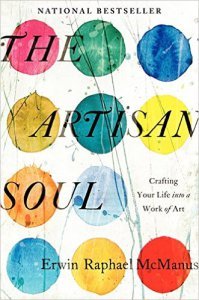 The Artisan Soul: Crafting Your Life into a Work of Art, by Erwin Raphael McMannus, HarperOne 2014. The book has been a national bestseller in both the religious and secular markets.
The Artisan Soul: Crafting Your Life into a Work of Art, by Erwin Raphael McMannus, HarperOne 2014. The book has been a national bestseller in both the religious and secular markets.
I read this book because it was assigned for an art group. I believe the leader chose it because he had read McManus’ book, Uprising: A Revolution of the Soul, in college and it had impacted him. I’m not sure I’m remembering that quite right.
Author Erwin MaMannus is an El Salvodorean who founded and is lead pastor of Mosaic, in LA. He grew up in Miami, Queens, and Raleigh, and was an activist for urban renewal, social justice, and racial reconciliation before making hte move to his second career of sorts as a fashion designer, film-maker, and actor. At some point a few years ago, his company experienced a hostile takeover and he lost it all. His bio–in the book and anywhere else I could find–seems vague in a bizarre way. Like instead of listing awards, you just get “many awards,” etc. I’m not saying I don’t believe him, just that I don’t feel like I’m getting the whole picture anywhere. I have seen reviews in line with mine that claim that McMannus is much better as a speaker/pastor/motivator than a writer, which I would totally believe, even though he has eight other books.
The language about him–on his books, on his website, etc.–is also a bit over the top for me. “An iconoclast.” “Futurist.” “Thought leader.” “Pens a manifesto.” “The beginning of a new renaissance.” Hmm… Have you ever even heard of the guy? Maybe so. At any rate, the whole thing strikes me as–although ardent–a little flaky.
The writing is mediocre, which often happens with self-help or religious non-fiction. One of his main issues is that there are not enough interesting stories or anecdotes. Just advice after advice, saying after saying, sound byte after sound byte. Also, his arguments do not follow a logical path, but amount to a number of disjointed platitudes. They sound good, but I was ready to demand more.
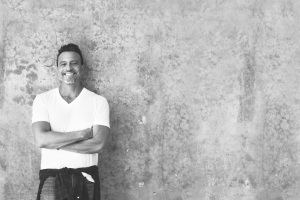 Then there’s this. I don’t actually agree with the thesis of this book: that we are all equally creative and are meant to live our lives creating. (It goes even further, as he names our lives as the real art of this artistic expression.) I just can’t agree. Some people have that genuine spark of the truly creative person, and it overflows into every area of their lives–way more than others will ever experience it. Some people’s hands just bloom creation, just like some people have green thumbs and some people can hardly speak without teaching or leading or whatever. My son has a sort of physical electricity about him. Sure, we are all meant to be physical, but he has a special gift of movement and inertia on his life. Creativity can be therapeutic, vital, or fun for everyone, but it just doesn’t hold the same space for everyone, and some people just get the same old tools and can go way farther with it. (Think of that person at camp who is given the same strings and knotting instructions, and while you make a crooked boondoggle, they come up with a rainbow macrame hammock.)
Then there’s this. I don’t actually agree with the thesis of this book: that we are all equally creative and are meant to live our lives creating. (It goes even further, as he names our lives as the real art of this artistic expression.) I just can’t agree. Some people have that genuine spark of the truly creative person, and it overflows into every area of their lives–way more than others will ever experience it. Some people’s hands just bloom creation, just like some people have green thumbs and some people can hardly speak without teaching or leading or whatever. My son has a sort of physical electricity about him. Sure, we are all meant to be physical, but he has a special gift of movement and inertia on his life. Creativity can be therapeutic, vital, or fun for everyone, but it just doesn’t hold the same space for everyone, and some people just get the same old tools and can go way farther with it. (Think of that person at camp who is given the same strings and knotting instructions, and while you make a crooked boondoggle, they come up with a rainbow macrame hammock.)
And if we’re talking about our creativity as as extension of God’s person-hood, I would be even more adamant about this. Each person has the flame of God inside, but we have different measures of His various attributes, which is why the church as the body of Christ or the married couple as the symbol of the relationship of God exists. Each person (and each gender) has different attributes in order to work best in unity and teach us about the whole Person of God. Some people are just more creative.
So, no, I didn’t love it. (Sorry, Sam.) I wouldn’t recommend it, although clearly I know some who would. And I did get a quite-long list of quotes.
_______________
QUOTES:
“Yet what humanity needs most is for us to set creativity free from this singular category of the extraordinary and release it into the hands of the ordinary” (p4-5).
“Fear is the shadow of creativity” (p7).
“The creative act is inherently an act of courage” (p7).
“We fear because we were never intended to create apart from God” (p8).
“I can say as confidently about you as I can about Kim that there is nothing common or ordinary about you” (p11).
“The complexity is that we are both works of art and artists at work” (p13).
“Art finds its deepest value when it is the authentic expression of a deep human experience” (p18).
“Remember, we can create only out of who we are, and everything we create is a reflection of who we are” (p22).
“We begin when God exhales and we inhale” (p23).
“Everyone can have it exactly like they want it as long as they want it exactly the way it is” (p25).
“…but we must never lose sight of the fact that God never chooses to give up on us or put us on an assembly line and treat us as a commodity” (p31).
“The same God Who creates, re-creates. And that process of re-creation begins in our very souls” (p33).
“To pursue a dream is to invite a nightmare! To live a life of love is to know betrayal and loss” (p35).
“It is about embracing our creative power and responsibility to create the life and the world that our soul inspires us to imagine” (p36).
“The future is a creative act, and like any creative act, the tools are as essential as the process” (p36).
“He created us with imagination and curiosity, with the capacity to hope and dream, and He placed within us all the material necessary to live an extraordinarily creative life” (p37).
“Even an authentic creative journey begins with imitation” (p39).
“Words spoken into a soul are like the hands of a potter pressed into wet clay” (p41).
“Over the years, I have come to realize that the crises most people face are less because of their circumstances than because of the narrative inside” (p42).
“…but somewhere in your life someone told you that you were small and you believed you were small, and now you are playing smaller than you are” (p46).
“I love how God meets a need that Adam had no language for” (p55).
“Every other voice will either make us less than we are intended to be or convince us that we are more than we really are” (p26).
“My mind begins to reel when imagining what this world would look like if all of us believed our lives could become masterpieces” (p63).
“So much more important than being heard is having something to say” (p67).
“God is, however, profoundly misunderstood” (p71).
“I resolved a long time ago that truth exists only if there is someone who is trustworthy. The truth is an extension of someone who can be trusted” (p72).
“Truth is not a piece of information, but a person” (p72).
“We are interpreters” (p73).
“We don’t see people for who they are; we see them through the filter of everyone we’ve ever known. We don’t see circumstances as they are; we see them through the filter of everything we’ve ever experienced” (p73).
“If life is a work of art and life is to become our most creative act, then we must realize that our lives will be our most profound interpretation of what it truly means to be human” (p74).
“I have come to realize that if the artistic process demands anything from us, it is that the artist must always tell the truth” (p75).
“Something isn’t true unless it is both experienced and profoundly subjective” (p75).
“The role of the artist is partly to interpret the human story” (p76).
“A significant part of the artistic challenge is to go beyond interpreting human experience to be an interpreter of human possibility” (p76).
“Beyond despair there must always be hope; beyond betrayal there must be a story of forgiveness; beyond failure there must be a story of resilience” (p78).
“Remember, the artisan soul finds truth in essence, not in information” (p81).
“The reality is that our struggles and suffering give us the context to tell the greatest story of our lives” (p82).
“It is instead our remembered self that controls how we perceive and experience life” (p83).
“I could not change my experiences–what happened, happened–but I could change my focus and my interpretation” (p85).
“Though our experiences are real, we are more than those experiences” (p85).
“Why did this happen to me? This is where interpretation becomes humanity’s most powerful agent” (p85).
“We are never fully free until we have fully forgiven” (p86).
“Our great temptation in times like this is to assume the worst of ourselves, to assume the worst of others, and in the end to even assume the worst of God” (p88).
“It is Einstein who said, ‘There are two ways to live your life–one is as though nothing is a miracle and the other is as if everything is a miracle'” (p90).
“It’s that easy, you know–except that it’s not” (p145).
“The creative act is the genius of unleashing untapped potential and unseen beauty within the constraints and boundaries of the medium from which we choose to create” (p146).
“Part of the artistic process is understanding the rules under which mediums express themselves and learning how to work within them so as to materialize your imagination through them” (p146).
“Creativity not only happens within boundaries and limitations, but in fact it is dependent on those limitations” (p146).
“Creativity isn’t about finding the thirteenth note; it is about arranging twelve notes in a way the world has never experienced before” (p147).
“The colors we use to paint our own lives splash all over the souls of those who are close to us” (p151).
“We can live our lives in such a way that outside observers marvel at what we’ve created while we drown in our own emptiness” (p152).
Save


Book Review: The BFG
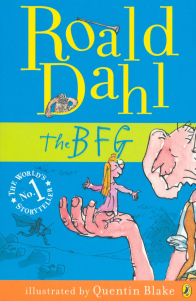 I picked up this book this summer as part of a plan to read several books for movies coming out which I wanted to go see. As a life-long Roald Dahl fan, I had read The BFG before. I did not remember it being a favorite. (Technically, the top spot belongs to Matilda.) But on re-read, I enjoyed it more than I remembered.
I picked up this book this summer as part of a plan to read several books for movies coming out which I wanted to go see. As a life-long Roald Dahl fan, I had read The BFG before. I did not remember it being a favorite. (Technically, the top spot belongs to Matilda.) But on re-read, I enjoyed it more than I remembered.
In a nutshell, this book is so charming, but also really terrifying. I love that about Raold Dahl (think Witches and just about anything else), and it almost seems like the right way to approach children: with a little bit of terrifying reality, a load of imagination, and a dash of pure bravery. Seriously, the giants are scary, and there is no glazing over their consumption of humans or their filthiness, nor their abuse of their runty brother. Still, throughout, the book is infused with magic and hope and humanity, and both children and grown-ups (and good giants) win the day.
Part of what I loved about this book is the language. Even more than in his other books, Dahl creates a playground for his language play with the uneducated but curious speak of the BFG. The way the BFG talks will make you smirk or giggle and will stay with you for days and weeks. It also encourages word exploration and experimentation. Dahl pulled it off, too. Sometimes accents can be distracting, but it’s hard to imagine this story without “crockadillies” and “whizpopping.” (You can check out the Roald Dahl dictionary HERE.)
Speaking of whizpopping, there are times when this book (again, like other Dahl books) becomes the sole property of children. At those times, grown-ups have to step outside of the jokes, the juvenile dreams, and the childish behavior and just appreciate the world he is creating for children. We were children, once, too, and it’s great for them to have a place to explore the greater themes of life, like dreams and bravery and smallness.
It’s a quick read. Not only is it short, but Dahl gives you setting, plot, and character, all in a few words here and a few words there. We hear, see, smell, taste, feel, and get to know these people with just a few broad Dahlesque brush strokes. Dahl really is amazing. Genius.
Definitely recommend.
_______________
MOVIE REVIEW
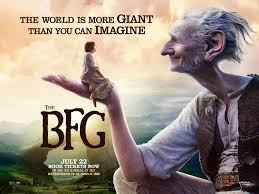 So once I had read the book, I took my kids to see the movie (2016). I had the thought in my head that they might not enjoy it, and there were things that I missed from the book to the screen, but overall the kids loved it and I did too. It was softer than the books, partly because it would have been terrifying to watch “real-skin” giants eat people: bones crunching, blood squirting, what-not. But the movie also retained the book’s playfulness, its language, and its charm. Sophie was a pretty perfect Sophie and the BFG was just plain perfect.
So once I had read the book, I took my kids to see the movie (2016). I had the thought in my head that they might not enjoy it, and there were things that I missed from the book to the screen, but overall the kids loved it and I did too. It was softer than the books, partly because it would have been terrifying to watch “real-skin” giants eat people: bones crunching, blood squirting, what-not. But the movie also retained the book’s playfulness, its language, and its charm. Sophie was a pretty perfect Sophie and the BFG was just plain perfect.
Definitely recommend.


Book Review: A History of Food in 100 Recipes
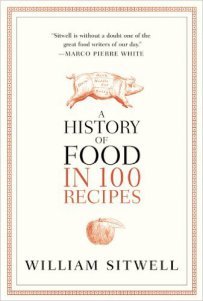 This book is an exception. The vast majority of what I read comes straight from my Best Books lists, even if I have to find a reason to put it there myself. At the library one day, my husband walked up to me and handed me the book, A History of Food in 100 Recipes by William Sitwell. It was such a sweet gesture–thinking that I would enjoy reading a thick tome of essays on food history–that I couldn’t put it back. I had to read it.
This book is an exception. The vast majority of what I read comes straight from my Best Books lists, even if I have to find a reason to put it there myself. At the library one day, my husband walked up to me and handed me the book, A History of Food in 100 Recipes by William Sitwell. It was such a sweet gesture–thinking that I would enjoy reading a thick tome of essays on food history–that I couldn’t put it back. I had to read it.
Of course, my husband knows me enough to understand a happy coupling when he saw it: I would enjoy reading a thick tome of essays on food history. So, it is no surprise that I enjoyed this book. Of course, it could have been poorly done. Many books are. But while this book is niche-y, it is well done.
The cover is simple, which is both attractive and distracting. The illustrations inside serve to enhance the history, but I would have liked more, and as a foodie I would have loved food photos. You are left up to your own imagination or food experience to see the foods in your head, while perusing bits of ancient text and biographical photos. At times, I questioned the foods that are included in the limited 100, but I just decided to trust Sitwell’s process: no two people would have chosen the same 100.
I can be a very critical reader, but I always had the sense that I was safe in Sitwell’s capable hands. The information he provides appears to be accurate and in order, even though much of it is obscure enough not to be too easily cross-referenced. Overall, his writing style was my favorite part of the read. He is charming, interesting, and even drily humorous. I mean, the book is basically just a whole lot of information, but Sitwell uses a sort of one-two side-step to insert more anecdotal experience and wry observations, linking the articles together.
And that is what this book is: a series of articles or essays. I would have preferred more narrative, but the essay style just makes for a different sort of read. The best way to enjoy it is in small spurts, as you might read a (really long) magazine. A bathroom reader?
One complaint: the title promised 100 recipes, but there are not. There aren’t really any recipes. You can not use this book as a cookbook. The “recipe” of the title refers to recipes in the historical sense, but I think Sitwell missed out on an opportunity to make this both a history and a cookbook, because what foodie doesn’t want another cookbook?
If you are obsessed with food, this is a book you will want to slide into the magazine rack by the loo. Enjoy.


October 7, 2016
Book Reviews: Picture Books by the Lobels
We have finished our stack of Arnold Lobel books, and this is our final Lobel review. To end it, we’ve got a quartet of Lobel picture books: The Turnaround Wind, On Market Street, Ming Ho Moves the Mountain, and The Great Blueness and Other Predicaments. As I’ve come to expect, some of Lobel’s books are awesome, and some of them are just weird and mediocre. You have the usual mix, here.
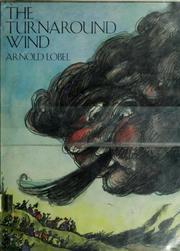 The Turnaround Wind began with a great idea that you might think a great illustrator could pull off, but I just don’t think the standards were high enough, here. I believe this was published posthumously, which might be why the illustrations are both “sketchy” (in the literal sense), pale and half-baked/not quite realized. And this book is all about the illustrations. It’s built that way. However, the text also could have been less scripted (like to explain the illustrations). Not recommended, unless you are a brilliant children’s illustrator who is going to take this book to the next level and a tribute to Lobel.
The Turnaround Wind began with a great idea that you might think a great illustrator could pull off, but I just don’t think the standards were high enough, here. I believe this was published posthumously, which might be why the illustrations are both “sketchy” (in the literal sense), pale and half-baked/not quite realized. And this book is all about the illustrations. It’s built that way. However, the text also could have been less scripted (like to explain the illustrations). Not recommended, unless you are a brilliant children’s illustrator who is going to take this book to the next level and a tribute to Lobel.
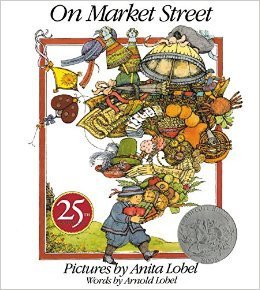 On Market Street is a Lobel classic, which he made in cahoots with his wife, who was also an illustrator. Despite it’s plaudits, it’s not my favorite. The idea, I think, is better than the execution, and not because Anita’s illustrations aren’t enjoyable, but more because Arnold could have given her better text and word choices to work with. On the other hand, it is a unique book, and the illustrations are worth snuggling up with and taking a slow walk through with your kids. Once.
On Market Street is a Lobel classic, which he made in cahoots with his wife, who was also an illustrator. Despite it’s plaudits, it’s not my favorite. The idea, I think, is better than the execution, and not because Anita’s illustrations aren’t enjoyable, but more because Arnold could have given her better text and word choices to work with. On the other hand, it is a unique book, and the illustrations are worth snuggling up with and taking a slow walk through with your kids. Once.
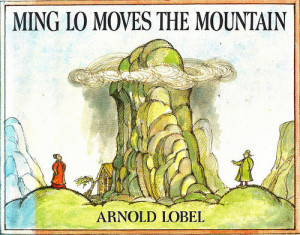 Ming Ho Moves the Mountain might be my favorite of the four books here. This and the next book are more standard picture books, with soft illustrations and a straightforward plot. This one reads like a Chinese fable, although I am not at all sure if the story came from somewhere older than Lobel. I am mystified by all the reviews out there from people who either didn’t understand the book or were confused until the “surprise” ending. The kids and I just slid along with the plot, familiar with other stories like it. Yes, the peasant man and his wife end up being the fools (unbeknownst to them), but they are also the villains (or the complainers). In the end, the moral is for the more virtuous readers, who should learn a lesson in contentment and gratitude from a somewhat silly story. I would recommend the book.
Ming Ho Moves the Mountain might be my favorite of the four books here. This and the next book are more standard picture books, with soft illustrations and a straightforward plot. This one reads like a Chinese fable, although I am not at all sure if the story came from somewhere older than Lobel. I am mystified by all the reviews out there from people who either didn’t understand the book or were confused until the “surprise” ending. The kids and I just slid along with the plot, familiar with other stories like it. Yes, the peasant man and his wife end up being the fools (unbeknownst to them), but they are also the villains (or the complainers). In the end, the moral is for the more virtuous readers, who should learn a lesson in contentment and gratitude from a somewhat silly story. I would recommend the book.
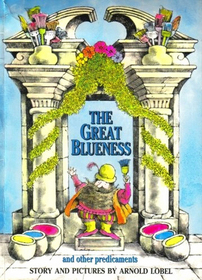 The Great Blueness and Other Predicaments is another winner. While teaching a few different morals and primary and secondary colors, the kids will be entertained and your literary sensibilities will remain unoffended. In an original fable where a wizard discovers color in a black-and-white world, both the story and illustrations are quality and engaging.
The Great Blueness and Other Predicaments is another winner. While teaching a few different morals and primary and secondary colors, the kids will be entertained and your literary sensibilities will remain unoffended. In an original fable where a wizard discovers color in a black-and-white world, both the story and illustrations are quality and engaging.





